The Irish land market has become a very crowded space of late.
If it were a football pitch, there certainly wouldn’t be any shortage of players.
Although farmers remain the primary customers for good-quality ground, they are now competing with an eclectic mix of investors and interest groups.
These range from international hedge funds to local business owners, and from forestry companies to environmental bodies.
The growing demand for agricultural land reflects policy changes within Irish agriculture and outside drivers such as climate change and the EU’s continuing efforts to combat the twin challenges of habitat decline and biodiversity loss.
The heightened level of competition for land was brought into sharp focus by the IFA recently when the farm body estimated that intensive dairy farmers could be forced to buy or rent an extra 68,000 acres to comply with nitrates rule changes which will significantly reduce stocking densities.
However, the dairy sector is not alone in needing a lot more land in the coming years.
The Government’s aim to quadruple the level of afforestation to 20,000 acres per year will certainly drive greater competition for ground. As will the planned development of 20 large-scale anaerobic digestion plants.
Meanwhile, the rewetting of 300,000 acres of drained peatlands by 2050 under the EU’s nature restoration law will inevitably remove a significant area of productive farmland.
The EU’s intention to ramp up designations to cover almost 30% of the State’s total land mass will similarly hit the overall supply of agricultural ground.
So how will these competing forces affect the land market in the short- to medium-term?
Professor Michael Wallace of UCD’s Agriculture and Food Economics School believes that a two-speed land market is emerging in Ireland and this will be accelerated by recent policy initiatives and commodity price trends.
Commercial
“Commercial [farming] interests would certainly be the driving force in the areas where we have the most productive soil types,” Prof Wallace contends.
However, the market will not be dominated to the same extent by farmers in areas where the land quality is not top-class and the primary enterprise is sheep and beef production.
“There, the economic drivers may be slightly different. Certainly, the competition from forestry and the diversion of lands towards environmental goods is probably stronger because the economics are more finely balanced,” he explains.
This summation tallies with the views of auctioneers. Dairy farmers have dominated farm purchases and lettings in the south and the east of the country for some time.
The remarkably strong profits from milk production over the last five years, allied more recently to the tighter nitrates rules, means that dairy farmers set the tone for the land market in large swathes of Munster and Leinster.
The latest Teagasc figures show that profits, excluding labour, on the average 97-cow dairy unit will top €130,000 this year on the back of record milk prices.
This gives dairy farmers the monetary muscle to buy land.
Meanwhile, the nitrates changes are providing an added incentive to secure additional ground.
Intensive milk suppliers have a simple choice; either they buy or lease extra land, or cut their cow numbers.
The only way around this is more land
“Nitrates is the new quota,” maintains Stephen Barry of Raymond Potterton Auctioneers in Navan.
“The only way around this is more land. Dairy farmers, in particular, have high stocking rates and need more land, not just for expansion, but to protect and maintain their numbers and possibly get out of derogation. The dairy farmer that will reduce his or her cow numbers is as rare as white blackbirds,” Barry maintains.
With a further tightening of the nitrates rules likely in the coming years – as water quality regulations become even stricter – demand for land among dairy farmers is expected to intensify.
This has already been illustrated in land rentals over recent weeks, with prices of €350/ac to €500/ac being paid for five-year leases of grazing ground.
Higher prices
These developments have also been reflected in higher land purchase prices over the last year, with average sale values moving from €12,000/ac to €14,000/ac up to €14,000/ac to €16,000/ac.
The last year has also seen a lot more farm sales dancing around the €20,000/ac mark.
Outside of intensive dairy areas, part-time farmers and business people continue to be very active buyers.
Prices have also hardened, albeit from a lower base. This is now set at €6,500/ac to €7,000/ac for forestry ground, and moves from there to around €12,000/ac, depending on land quality and location.
Indeed, the Irish Farmers Journal’s Agricultural Land Price Report estimated that close to 40% of farms were bought in 2021 by individuals whose primary income was not from farming.
Roscommon-based consulting auctioneer John Earley says such buyers continue to be very active in the west. These buyers generally have a connection with the land, and an appreciation of its value, he explains.
Similar sentiments are expressed by Tom Crosse of GVM Auctioneers in Limerick.
“Many astute business people now see land as a very safe haven in terms of investment. They are also using the tax breaks associated with land as a conduit to transfer wealth to the next generation,” Crosse says.
The attractiveness of land as a canny investment is appreciated beyond the small towns of rural Ireland, Stephen Barry insists.
“Even the shiny shoes brigade in south Dublin are now recommending investing in land,” he observes.
However, while local business interests play a key role in the Irish land market, the volume of ground purchased by international corporations or the mega-rich remains relatively small.
Where it does happen though, commercial farmers are not able to compete.
And although there have been straws in the wind regarding hedge funds purchasing land for forestry, and investors seeking to buy large tracts of farmland to offset carbon emissions, such purchases have yet to materialise.
That is not to say such groups will not become an important market force in the future.
In fact, Prof Michael Wallace believes the farming of carbon credits might be on the horizon. But the absence of a structured mechanism to trade such credits, as well as low prices, is delaying its emergence.
“When you start to see carbon credit prices up at €100/t [voluntary prices are currently at around
€15/t] or something like that, it would potentially then be a very valuable source of income,” he explains. “At the moment, we’re just not there yet.”
The general consensus among auctioneers is that land prices will at least hold in 2023. They point to strong milk, cereals, beef and lamb prices to justify their confidence.
The impact of the aforementioned nitrate rules and the increased payments under the forestry programme are also cited.
Wallace concurs with this. “It seems to me that the likelihood is that we will continue to see some strengthening in the land market,” he predicts.
And while commodity prices remain high, conventional farming will continue to dominate the land market.
However, Wallace cautions that land prices could soften if the Government pushes for a cull in the beef or dairy herds in the event that agriculture misses its emissions reduction targets.
“The danger is that we are not going to meet the [climate change] target set out for 2030, and that could throw things in a different direction,” Wallace warns.
Will farmers continue to control the land market in such a scenario?
That is the million-dollar question.
Forestry targets challenging despite ‘game-changing’ planting supports
The increased planting premiums are potentially “a game changer” for the forestry sector, Professor Michael Wallace of UCD maintains.
However, he is not convinced that the more generous supports will be sufficient to meet the Government’s afforestation goals.
Afforestation targets have been set at 8,000ha or 20,000ac annually under the new forestry programme. However, just 2,000ha (5,000ac) were planted in 2021.
We are unlikely to see a lot of better-quality land moving into forestry for the obvious reason that the opportunity cost is just too high
“I think the level of payments are quite a game changer for forestry because it makes it very competitive and a potential alternative enterprise,” Wallace says.
However, even with the increased payments – which are worth over €1,000/ha for planting broadleaves – he contends that forestry planting is unlikely on better soil types.
“We are unlikely to see a lot of better-quality land moving into forestry for the obvious reason that the opportunity cost is just too high,” he explains.
Wallace says the higher returns from dairying and tillage mean that planting is likely to be restricted to upland and “more marginal land”.
The new supports regime has pushed the base price of this planting-type land to €6,500-€7,000/ac.
However, Wallace is not convinced that enough ground will be committed to forestry in order to meet the Government’s ambition of planting 20,000ac per year.
“The evidence that is there so far would suggest that we will be well short of it [the 20,000-acre target],” he maintains.
“There is a lot of resistance to forestry,” Wallace concedes.
“It is a huge decision to make because it is irreversible. You are making a permanent decision to change your land use away from conventional agriculture,” he points out.
While there have been some novel acquisitions in the forestry sector – such as the purchase of 280ac in Connemara’s Maam Valley by environmental group Hometree, which plans to invest €12m in restoring 4,000ac of wild woodland in the west of Ireland – competition from conventional farming remains a major barrier.
“Globally, we need more food and the upward pressure on food prices is obviously going to benefit farm incomes,” Wallace explains.
“So the competition then is between use of land for food versus forestry, and the economics at the moment are slanting towards the food side.”
The Irish land market has become a very crowded space of late.
If it were a football pitch, there certainly wouldn’t be any shortage of players.
Although farmers remain the primary customers for good-quality ground, they are now competing with an eclectic mix of investors and interest groups.
These range from international hedge funds to local business owners, and from forestry companies to environmental bodies.
The growing demand for agricultural land reflects policy changes within Irish agriculture and outside drivers such as climate change and the EU’s continuing efforts to combat the twin challenges of habitat decline and biodiversity loss.
The heightened level of competition for land was brought into sharp focus by the IFA recently when the farm body estimated that intensive dairy farmers could be forced to buy or rent an extra 68,000 acres to comply with nitrates rule changes which will significantly reduce stocking densities.
However, the dairy sector is not alone in needing a lot more land in the coming years.
The Government’s aim to quadruple the level of afforestation to 20,000 acres per year will certainly drive greater competition for ground. As will the planned development of 20 large-scale anaerobic digestion plants.
Meanwhile, the rewetting of 300,000 acres of drained peatlands by 2050 under the EU’s nature restoration law will inevitably remove a significant area of productive farmland.
The EU’s intention to ramp up designations to cover almost 30% of the State’s total land mass will similarly hit the overall supply of agricultural ground.
So how will these competing forces affect the land market in the short- to medium-term?
Professor Michael Wallace of UCD’s Agriculture and Food Economics School believes that a two-speed land market is emerging in Ireland and this will be accelerated by recent policy initiatives and commodity price trends.
Commercial
“Commercial [farming] interests would certainly be the driving force in the areas where we have the most productive soil types,” Prof Wallace contends.
However, the market will not be dominated to the same extent by farmers in areas where the land quality is not top-class and the primary enterprise is sheep and beef production.
“There, the economic drivers may be slightly different. Certainly, the competition from forestry and the diversion of lands towards environmental goods is probably stronger because the economics are more finely balanced,” he explains.
This summation tallies with the views of auctioneers. Dairy farmers have dominated farm purchases and lettings in the south and the east of the country for some time.
The remarkably strong profits from milk production over the last five years, allied more recently to the tighter nitrates rules, means that dairy farmers set the tone for the land market in large swathes of Munster and Leinster.
The latest Teagasc figures show that profits, excluding labour, on the average 97-cow dairy unit will top €130,000 this year on the back of record milk prices.
This gives dairy farmers the monetary muscle to buy land.
Meanwhile, the nitrates changes are providing an added incentive to secure additional ground.
Intensive milk suppliers have a simple choice; either they buy or lease extra land, or cut their cow numbers.
The only way around this is more land
“Nitrates is the new quota,” maintains Stephen Barry of Raymond Potterton Auctioneers in Navan.
“The only way around this is more land. Dairy farmers, in particular, have high stocking rates and need more land, not just for expansion, but to protect and maintain their numbers and possibly get out of derogation. The dairy farmer that will reduce his or her cow numbers is as rare as white blackbirds,” Barry maintains.
With a further tightening of the nitrates rules likely in the coming years – as water quality regulations become even stricter – demand for land among dairy farmers is expected to intensify.
This has already been illustrated in land rentals over recent weeks, with prices of €350/ac to €500/ac being paid for five-year leases of grazing ground.
Higher prices
These developments have also been reflected in higher land purchase prices over the last year, with average sale values moving from €12,000/ac to €14,000/ac up to €14,000/ac to €16,000/ac.
The last year has also seen a lot more farm sales dancing around the €20,000/ac mark.
Outside of intensive dairy areas, part-time farmers and business people continue to be very active buyers.
Prices have also hardened, albeit from a lower base. This is now set at €6,500/ac to €7,000/ac for forestry ground, and moves from there to around €12,000/ac, depending on land quality and location.
Indeed, the Irish Farmers Journal’s Agricultural Land Price Report estimated that close to 40% of farms were bought in 2021 by individuals whose primary income was not from farming.
Roscommon-based consulting auctioneer John Earley says such buyers continue to be very active in the west. These buyers generally have a connection with the land, and an appreciation of its value, he explains.
Similar sentiments are expressed by Tom Crosse of GVM Auctioneers in Limerick.
“Many astute business people now see land as a very safe haven in terms of investment. They are also using the tax breaks associated with land as a conduit to transfer wealth to the next generation,” Crosse says.
The attractiveness of land as a canny investment is appreciated beyond the small towns of rural Ireland, Stephen Barry insists.
“Even the shiny shoes brigade in south Dublin are now recommending investing in land,” he observes.
However, while local business interests play a key role in the Irish land market, the volume of ground purchased by international corporations or the mega-rich remains relatively small.
Where it does happen though, commercial farmers are not able to compete.
And although there have been straws in the wind regarding hedge funds purchasing land for forestry, and investors seeking to buy large tracts of farmland to offset carbon emissions, such purchases have yet to materialise.
That is not to say such groups will not become an important market force in the future.
In fact, Prof Michael Wallace believes the farming of carbon credits might be on the horizon. But the absence of a structured mechanism to trade such credits, as well as low prices, is delaying its emergence.
“When you start to see carbon credit prices up at €100/t [voluntary prices are currently at around
€15/t] or something like that, it would potentially then be a very valuable source of income,” he explains. “At the moment, we’re just not there yet.”
The general consensus among auctioneers is that land prices will at least hold in 2023. They point to strong milk, cereals, beef and lamb prices to justify their confidence.
The impact of the aforementioned nitrate rules and the increased payments under the forestry programme are also cited.
Wallace concurs with this. “It seems to me that the likelihood is that we will continue to see some strengthening in the land market,” he predicts.
And while commodity prices remain high, conventional farming will continue to dominate the land market.
However, Wallace cautions that land prices could soften if the Government pushes for a cull in the beef or dairy herds in the event that agriculture misses its emissions reduction targets.
“The danger is that we are not going to meet the [climate change] target set out for 2030, and that could throw things in a different direction,” Wallace warns.
Will farmers continue to control the land market in such a scenario?
That is the million-dollar question.
Forestry targets challenging despite ‘game-changing’ planting supports
The increased planting premiums are potentially “a game changer” for the forestry sector, Professor Michael Wallace of UCD maintains.
However, he is not convinced that the more generous supports will be sufficient to meet the Government’s afforestation goals.
Afforestation targets have been set at 8,000ha or 20,000ac annually under the new forestry programme. However, just 2,000ha (5,000ac) were planted in 2021.
We are unlikely to see a lot of better-quality land moving into forestry for the obvious reason that the opportunity cost is just too high
“I think the level of payments are quite a game changer for forestry because it makes it very competitive and a potential alternative enterprise,” Wallace says.
However, even with the increased payments – which are worth over €1,000/ha for planting broadleaves – he contends that forestry planting is unlikely on better soil types.
“We are unlikely to see a lot of better-quality land moving into forestry for the obvious reason that the opportunity cost is just too high,” he explains.
Wallace says the higher returns from dairying and tillage mean that planting is likely to be restricted to upland and “more marginal land”.
The new supports regime has pushed the base price of this planting-type land to €6,500-€7,000/ac.
However, Wallace is not convinced that enough ground will be committed to forestry in order to meet the Government’s ambition of planting 20,000ac per year.
“The evidence that is there so far would suggest that we will be well short of it [the 20,000-acre target],” he maintains.
“There is a lot of resistance to forestry,” Wallace concedes.
“It is a huge decision to make because it is irreversible. You are making a permanent decision to change your land use away from conventional agriculture,” he points out.
While there have been some novel acquisitions in the forestry sector – such as the purchase of 280ac in Connemara’s Maam Valley by environmental group Hometree, which plans to invest €12m in restoring 4,000ac of wild woodland in the west of Ireland – competition from conventional farming remains a major barrier.
“Globally, we need more food and the upward pressure on food prices is obviously going to benefit farm incomes,” Wallace explains.
“So the competition then is between use of land for food versus forestry, and the economics at the moment are slanting towards the food side.”



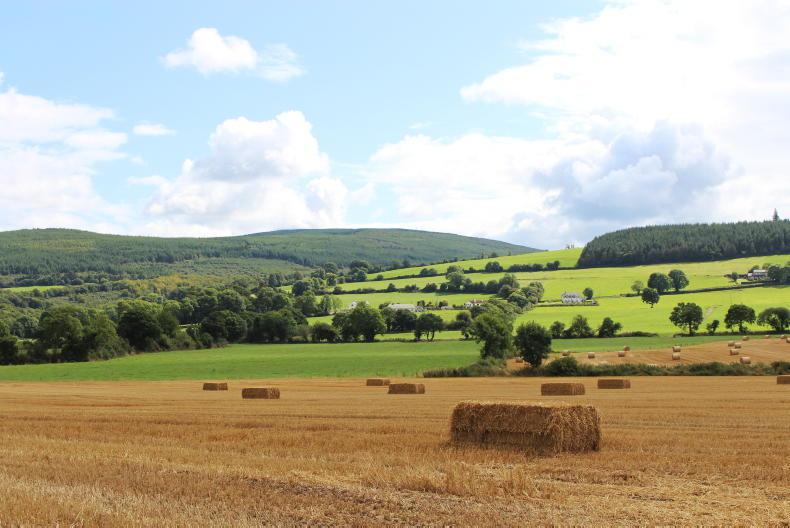

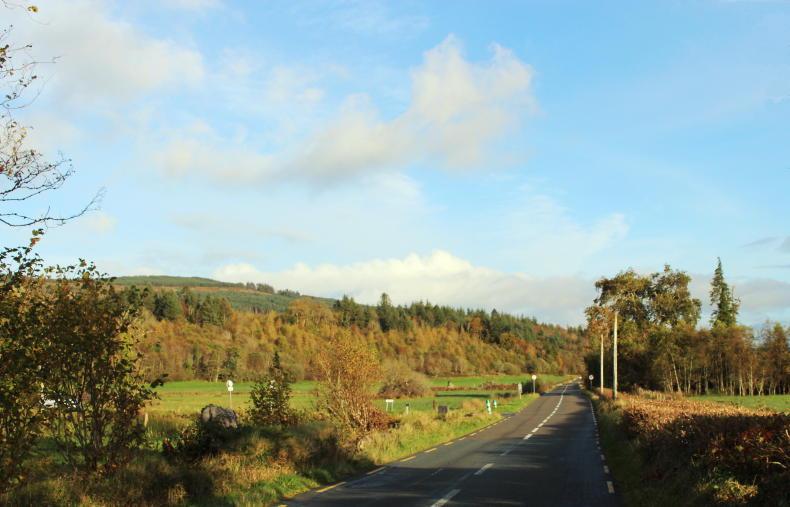
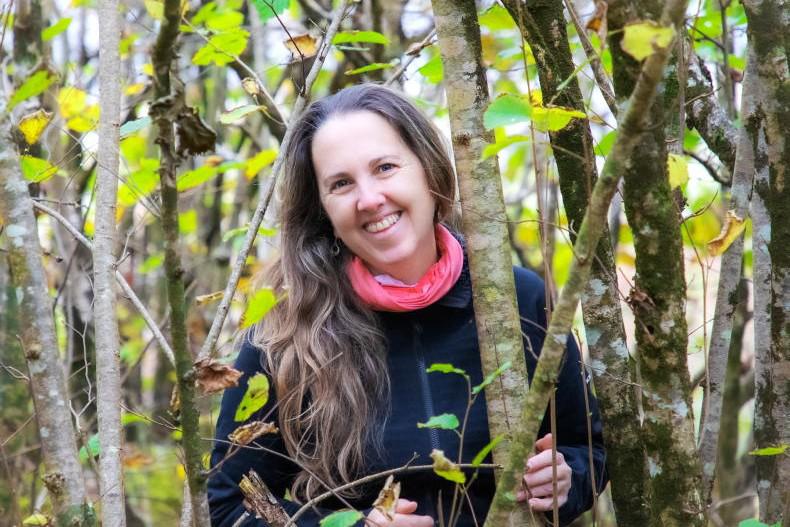
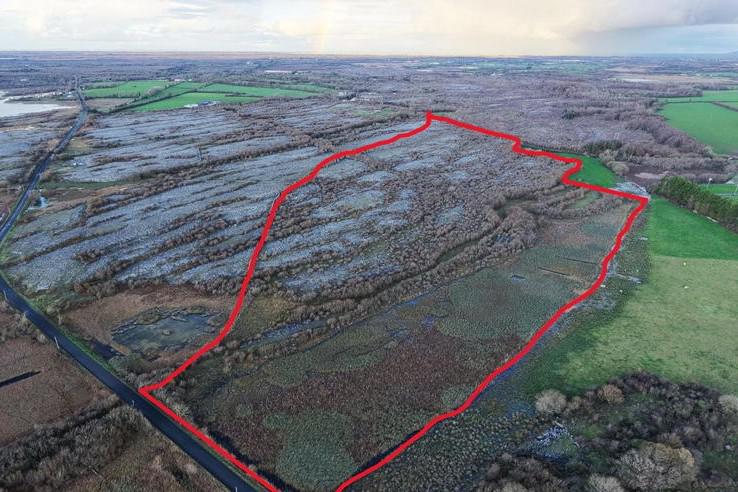
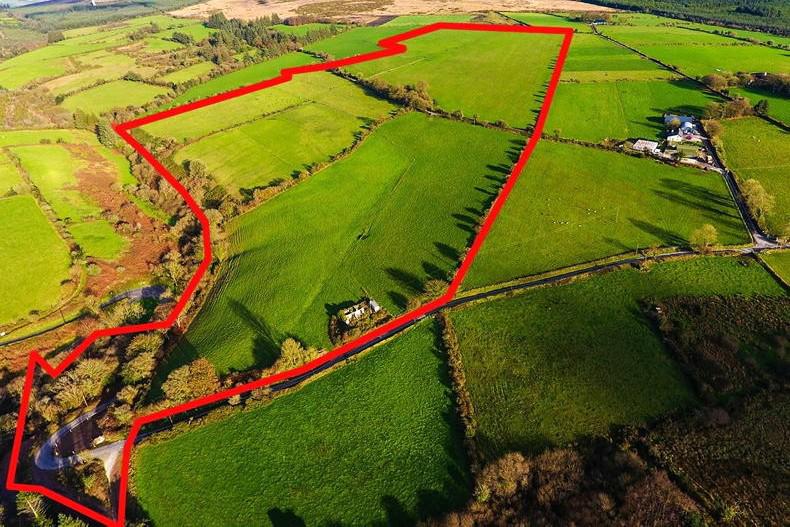
SHARING OPTIONS